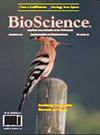石榴(Punica granatum L.)的生长和生化变化对褐飞虱感染、矿物质和纳米肥料的反应
IF 0.5
4区 农林科学
引用次数: 0
摘要
在温室条件下,研究了根结线虫(Meloidogyne incognita)的四种接种量(每株 500、1,000、2,000 或 4,000 个第二阶段幼虫 (J2))对两个石榴栽培品种("Manfalouty "和 "Wonderful")的影响,以及对植物无机和有机化学浓度的反应。此外,还研究了六种商业化肥(无机肥料和纳米肥料)对植物生长和线虫繁殖的影响。在接种量为 2,000 J2/株时,两种栽培品种的虫瘿形成、嵌入阶段和最终线虫数量都最高。500 J2/株的繁殖率最高,而 4 000 J2/株的繁殖率最低。在所有 M. incognita 接种量下,'Wonderful'对线虫侵染都比'Manfalouty'敏感。在 2,000 和 4,000 J2/株时,'Wonderful'比'Manfalouty'的植株鲜重和干重减少得更多。在这两种栽培品种中,随着线虫接种量的增加,氮、磷和钾的浓度都有所下降。与'Wonderful'相比,'Manfalouty'的下降更为明显。纳米肥料、Hyper Feed® 和 Hyper Feed Solo® 降低了所有线虫参数,但只有'Wonderful'的线虫参数有所降低。使用 Hyper Feed® 处理后,'Wonderful'的所有植物生长参数的增加百分比最高。使用纳米肥料(尤其是 Hyper Feed®)处理的'Manfalouty'的总碳水化合物浓度有所增加。此外,使用其中一种纳米肥料处理'Wonderful'时,总酚和单宁的浓度也有所增加。一般来说,两种纳米肥料都能提高植物的氮含量。我们建议在石榴病虫害综合防治(IPM)计划中使用纳米肥料,因为与无机肥相比,纳米肥料能更明显地改善植物生长参数,降低线虫繁殖参数。本文章由计算机程序翻译,如有差异,请以英文原文为准。
Pomegranate (Punica granatum L.) growth and biochemical alterations in response to meloidogyne incognita infection, minerals, and nano-fertilizers
The effects of four inoculum levels (500, 1,000, 2,000, or 4,000 second-stage juveniles (J2) per plant) of the root-knot nematode, Meloidogyne incognita, on two pomegranate cultivars (‘Manfalouty’ and ‘Wonderful’) were investigated under greenhouse conditions in response to plant inorganic and organic chemical concentrations. Furthermore, the effects of six commercial chemical fertilizers (inorganic fertilizers and nano-fertilizers) on plant growth and nematode reproduction were also studied. Both cultivars recorded the highest gall formation, embedded stages, and final nematode population at the inoculum dosage of 2,000 J2/plant. The highest reproductive rate was achieved with 500 J2/plant, while the lowest rate was observed with 4,000 J2/plant on both cultivars. ‘Wonderful’, at all M. incognita inoculum levels, was more sensitive to nematode infestation than ‘Manfalouty’. ‘Wonderful’ showed a greater reduction in fresh and dry plant weights than ‘Manfalouty’ at 2,000 and 4,000 J2/plant. In both cultivars, the concentrations of N, P, and K decreased with increasing nematode inoculum levels. This decline was more pronounced in ‘Manfalouty’ than in ‘Wonderful’. The nano-fertilizers, Hyper Feed®, and Hyper Feed Solo® reduced all nematode parameters but only in ‘Wonderful’. Treatment with Hyper Feed® resulted in the highest percentage increases in all plant growth parameters in ‘Wonderful’. Total carbohydrate concentration was increased in ‘Manfalouty’ treated with the nano-fertilizers, especially with Hyper Feed®. Also, concentrations of total phenols and tannins increased in ‘Wonderful’ when treated with either nano-fertilizer. Generally, both nano-fertilizers showed an increase in plant N levels. We recommend using nano-fertilizers in integrated pest management (IPM) programs on pomegranate where they improved plant growth parameters and reduced nematode multiplication parameters more markedly than inorganic fertilizers.
求助全文
通过发布文献求助,成功后即可免费获取论文全文。
去求助
来源期刊

Bioscience Journal
AGRICULTURE, MULTIDISCIPLINARY-AGRONOMY
CiteScore
1.10
自引率
0.00%
发文量
90
期刊介绍:
The Bioscience Journal is an interdisciplinary electronic journal that publishes scientific articles in the areas of Agricultural Sciences, Biological Sciences and Health Sciences. Its mission is to disseminate new knowledge while contributing to the development of science in the country and in the world. The journal is published in a continuous flow, in English. The opinions and concepts expressed in the published articles are the sole responsibility of their authors.
 求助内容:
求助内容: 应助结果提醒方式:
应助结果提醒方式:


